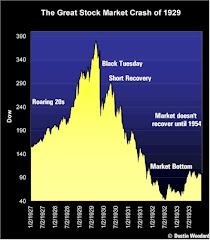The National Union of Public and General Employees recently came out with a letter on policy statement regarding pensions. They were responding to an article by The Globe and Mail called Canada's Growing Pension Puzzle
The letter presented some interesting perspectives about public sector pensions. It also presented some serious misinterpretations about the current system of pensions for public sector employees.
The letter commented that the article played on "a convenient untruth: that public sector workers have a huge advantage over most others because they have cushy pensions provided by, or backed and guaranteed by, the taxpayer." Unfortunately for taxpayers this is a a truth that is substantiated by the public sector pension plans themselves.
The Ontario Teachers Plan states in regards to its almost $20Billion shortfall that "Responsibility for ensuring a defined benefit pension plan remains fully funded lies with the plan sponsor, usually the employer... " This sounds like it is backed by taxpayers.
The comment also points out the "huge advantage" that the public sector has with the pensions and benefits they are paid with taxpayer dollars. This sentiment is part of a report from the Canadian Chamber of Commerce that comments "With public sector jobs offering higher pension benefits, it can be argued that the current pension regime affects not only private sector competitiveness, but also its ability to attract and retain labour."
Another contentious point from the letter was an assertion that public sector employees pay their own pensions. In fact, the subtitle of the letter was "Public sector workers pay 8% to 9% of their income to finance public pension plans". As we saw last week the PSP - Federal Government Employee Pension Fund requires contributions of 4.9% of annual salary up to $46,300 and 8.4% of annual salary above this amount.
So the numbers just don't make sense.
The NUPGE in their PR campaign states that the public servant pays 8% to 9% of their own pension. To be fair in many pensions this is the contribution rate. However, this assumes that the employees are picking up half the cost. The CD Howe Institute in research for a pension paper discovered that the actuary for the Federal Government pension plan calculated that a contribution level of 30% of income is required to fund a gold-plated or defined benefit pension plan. Sorry but 8% comes up way short of the full amount required.
Part of the argument for the gold-plated pension is that "Their benefits were bargained for, and trade-offs were made along the way. For example, public sector workers traded off other benefits and greater wages to finance their pensions." This makes for a good argument if it were true but the CFIB Canadian Federation of Independent Business shattered this fantasy with their report called The Wage Watch. Public sector employees have a large gap between their pay and that of the private sector. Not only do they get gold-plated pensions they get better benefits and higher pay to boot.
As the letter moves onto the next section it asks "Have you ever heard of a Retirement Compensation Arrangement? RCAs are pension plans for business owners and senior executives, allowing companies to pay out exorbitant pensions to retiring executives. With an RCA, business owners and executives have an opportunity to increase their contributions to a retirement program beyond regular RRSPs and pension limits."
Have you ever heard of a Supplementary Pension Arrangement? SRAs are pension plans for government employees, allowing taxpayers to pay out exorbitant pensions to retiring public servants. These are the pensions that pay over an above the current pension limits. In the public sector this is about $135,000 per year but many pension plans have set these up for many city employees and provincial employees.
No most people don't know what a RCA is nor do they know what a Supplementary Pension is.
It appears that indeed pensions are a puzzle and the public sector unions obviously are missing several pieces.
Monday, June 15, 2009
Subscribe to:
Post Comments (Atom)



No comments:
Post a Comment